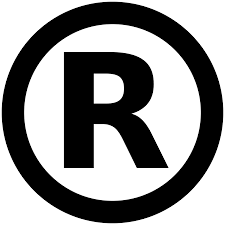January 1, 2019, the new Trademark Act came into force ‘. The law implements Directive 2015/2436 / EU of the European Parliament and of the Council of 16 December 2015 on the approximation of the laws of the Member States relating to trade marks. According to the legislator, the purpose of the amendment is to “modernize the regulation of trademarks and harmonize the national trademark systems and the EU trademark system.” ensure an efficient and user-friendly registration system tailored to the needs of users and technological developments. In addition to the substantive amendments to the Act, emphasis has been placed on the fact that the Act must follow the same legal structure as the above directive.
Highlights of the legislative amendment The requirement for graphic representation has lapsed In order to create a more contemporary trademark law, the requirement that a trademark must be able to be reproduced graphically. The requirement was initially put in place to ensure that the nature of the protected mark could be easily ascertained so that the extent of protection could be ascertained. With new technologies, this can be done in ways other than reproducing the brand graphically. Thus, the requirement that the register must continue to contain a precise reproduction of the protected mark remains. Greater protection against the transport of counterfeit As a result of several judgments of the European Court of Justice, it has been decided that also goods transported through the EU in a sealed container under the so-called suspension scheme may constitute an infringement in transit countries. However, the carrier can have the transport released by documenting that the goods can be freely traded in the country of destination. In the past, goods in transit did not constitute a violation in the transit country.
Changing the fee structure of the Patent and Trademark Office As part of creating more room for new trademark rights, it was decided in 2015 to change the fee structure in the EU, so that when applying for registration of a trademark, one class was automatically included in the price instead of earlier. up to 3 classes. These changes are now also reflected in Danish law, so that a Danish application basically comprises only one class. Several classes can be purchased. Modification of the Patent and Trademark Office’s case processing First and foremost, the case procedure is changed, so that a registration is only issued after the expiry of the two-month time limit for opposition. In the future, it will also be possible to select a search report on possible conflicting older rights to or from. This is done in the interests of small and medium-sized enterprises in particular, who will try their hand at trademark registration. If selected, it will incur a fee. The details of this search report are not yet known. If this is a report with the same content as the reports available today, the utility will be limited.
Codification of practice Despite the fact that the law is widely changed in language, the vast majority of language changes are due to a desire to make the law more user-friendly by writing rules established on the basis of long-term practice into the law. However, the adjustments have immediately made the law somewhat more complicated to read and understand.
Endowed rights continue Denmark is the country in the EU where it is easiest to obtain the protection of a trademark solely on the basis of use. It was considered to limit or remove this particular Danish option, but this has not happened. The requirements for obtaining protection are now specified in the law, but this is not intended to bring about a change in practice. If you have any questions about the new law, you are welcome to contact us.

